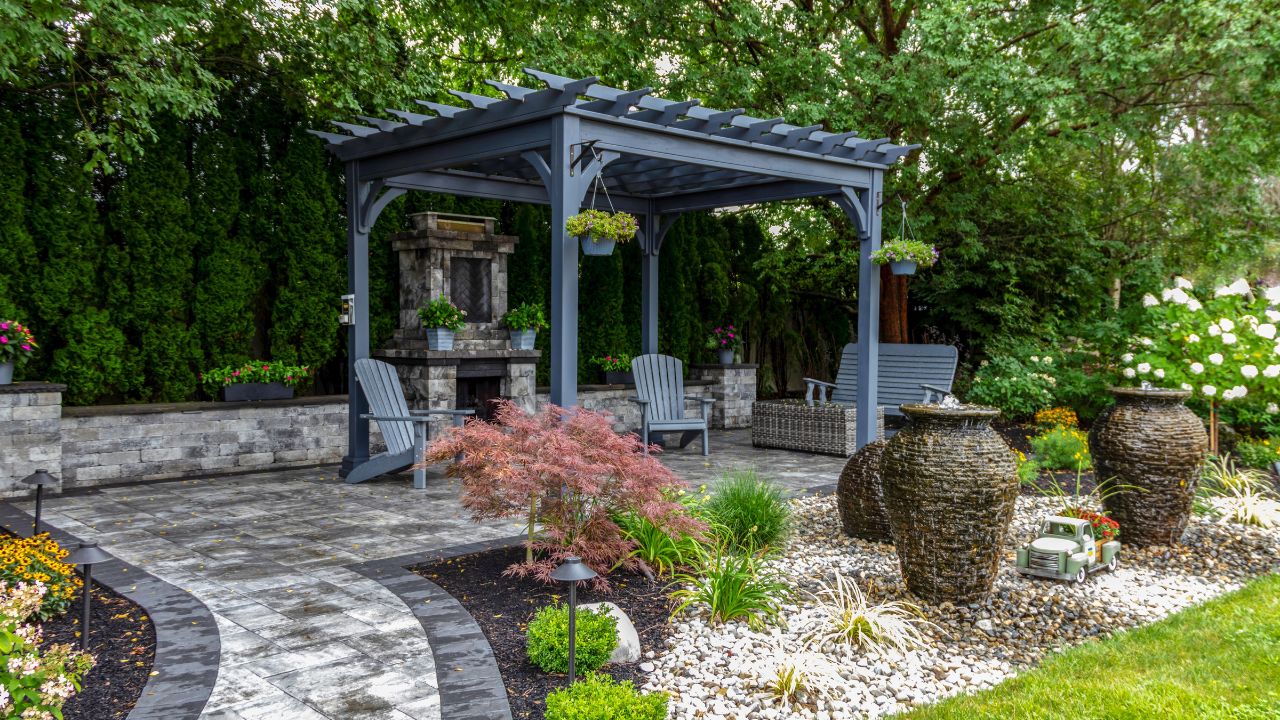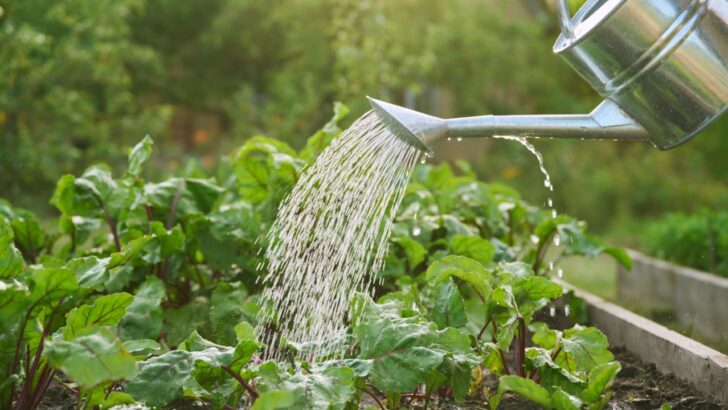Plants need water to survive, but did you know there are ways to garden where you might not need so much of it?
If you’re conscious about conserving water, especially if you live in an area prone to droughts where every drop counts, maximizing absorption is key. But how does one go about that? With careful planning and learning how plant systems use their water intake.
Several landscaping and gardening experts have taken the time to share tips to help your plants thrive without running your water bill crazy high or wasting resources.
Plan Your Garden Carefully

Image Credit: Shutterstock.
Planning is critical to saving water because, as Siobhan Shaw, co-founder of the non-profit Growing to Give, says, “Not all plants are created equal when it comes to thirst.” Some are fine with the occasional watering. Yet “others are drama queens that wilt at the first sign of dehydration.”
She suggests gardeners pay attention to how they group plants, keeping those with similar watering needs together. Otherwise, you’re apt to overwater some and underwater others, and the outcome won’t be great for your water bill or your plants.
Choose Native Plants

Image Credit: Shutterstock.
Ryan Farley, CEO of LawnStarter, “recommend[s] selecting your plants carefully when the goal is saving water” because “[n]ative plants are going to be adapted to the baseline conditions of your area, including rainfall.”
Choosing native plants in an area prone to droughts can reduce water consumption, and the plants will continue to thrive regardless.
Choose the Time of Day Wisely

Image Credit: Shutterstock.
Farley also says, “The time of day you water can also have a pretty drastic impact.” For example, when temperatures are cooler, you’ll need less water because it will actually make it into the soil without evaporating as it would during higher temps.
This is especially true in the summer months and warm climates, where it’s not common to see temperatures 80 degrees Fahrenheit or higher.
Avoid Overpruning

Image Credit: Shutterstock.
Shaw also cautions gardeners not to over-prune their plants. Doing so “exposes the lower plant and soil to direct sun, increasing evaporation and making plants thirstier.” They’ll need more water to thrive, and you’ll have the opposite effect than you intended.
There’s no harm in letting them grow out, she says, because it creates a fuller canopy that shades the plants, keeping moisture in without the need “to babysit your garden with a hose 24/7.”
Use Mulch

Image Credit: Shutterstock.
Mulch is a game-changer when it comes to keeping moisture contained within the soil. Founder and CEO of TN Nursery, Tammy Sons, recommends using it because it can help prevent evaporation.
Mulch is easily sourced, or you can make your own, just lay it over the top of the soil surrounding your plants. Ward Dilmore, founder and head designer at Petrus Landscaping, says natural is the way to go here because of the added nutrients. Skip the dyed varieties.
Build Healthy Soil

Image Credit: Shutterstock.
Dilmore also advises gardeners to build healthy soil by regularly “[a]dding compost and organic matter … [to] improve water retention and drainage.” Doing this annually can boost the soil’s nutrients and create a self-sustaining ecosystem.
Adding compost can also enhance the soil’s nutrition, creating a better feeding environment for plants.
Plant in Shaded Areas

Image Credit: Shutterstock.
Shaded areas should not be overlooked when it comes to gardening. Dilmore says these regions “can be more water efficient” and “help reduce water loss from evaporation.” Plus, during the summer months, the shade will keep plants cooler, so they’ll need less water to thrive.
Just be careful not to choose plants that need direct sunlight to thrive. Otherwise, you’ll create a whole new conundrum.
Plant Drought-Tolerant Varieties Away From Water Sources

Image Credit: Shutterstock.
There are many drought-tolerant plant varieties that would make a wonderful addition to your garden. They’ll add to the aesthetic without driving up your water bill.
Plus, as Dilmore says, they “can be planted farthest away from your water source” and still thrive. They still need to be watered, but not nearly as much as some other varieties, plus, if you live in a rainy area, you might not need to pay much attention to them at all.


